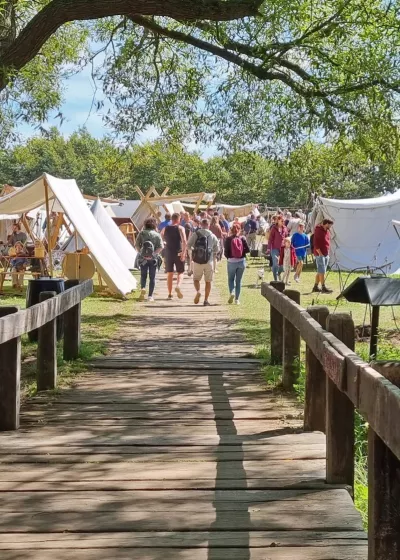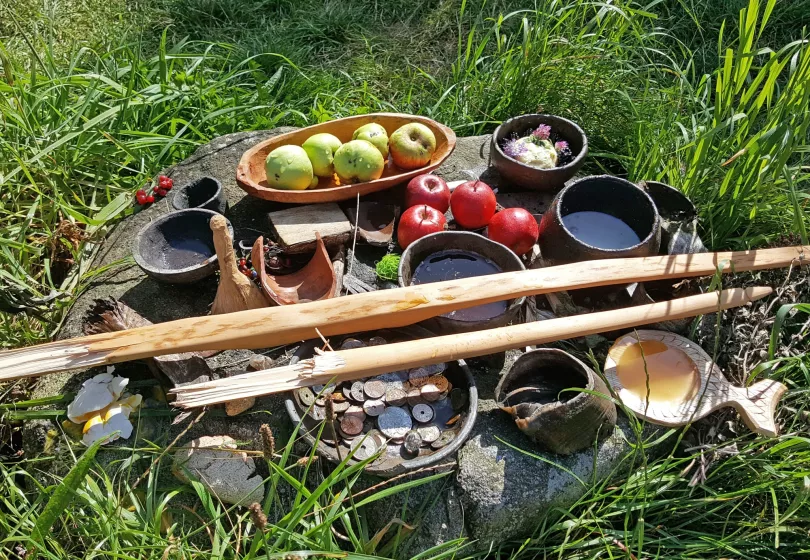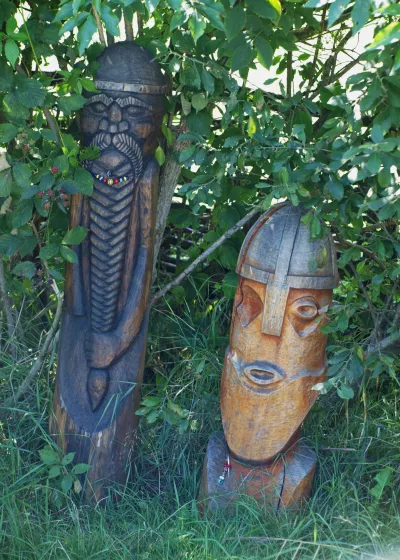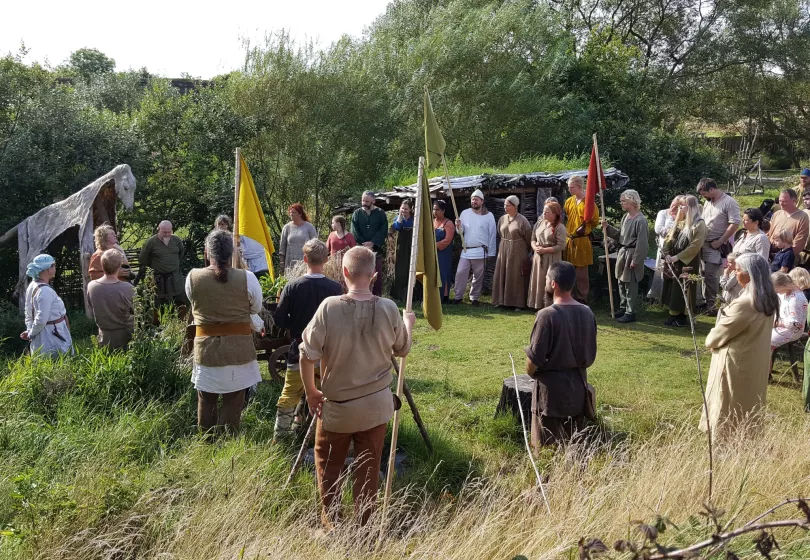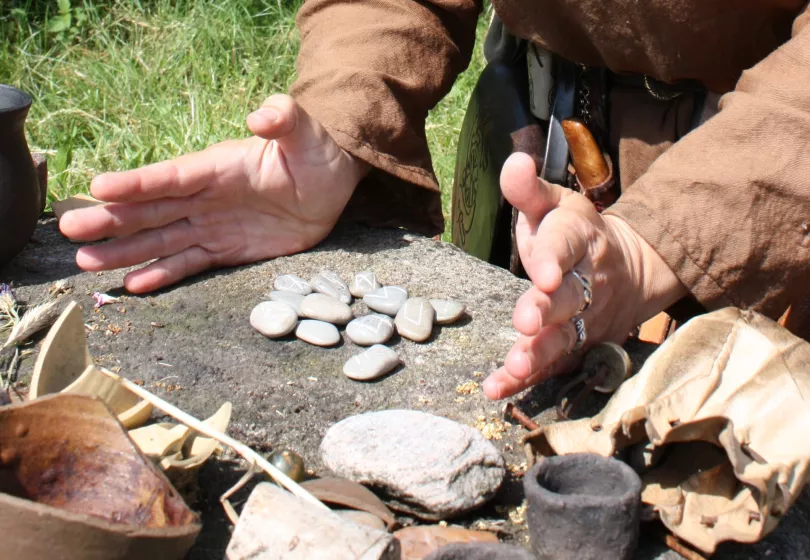A sacred place
You are very welcome to visit the sacrificial place and bog in Ribe VikingeCenter. It's a very special place, and you should take a moment to just stand still, open up your senses and feel the atmosphere.
This is where the völva lives. She knows about the gods, about herbs and healing. She can go into a trance when singing (seidr) and answer questions concerning the future. She turns to the runes in order to advise you.
There are several statues in the sacrificial place. Some of them are quite easy to figure out if you are a little acquainted with the Norse mythology. There is also a dead horse which may appal you. It is a sacrifice to the gods, however. The horse is the second largest sacrifice possible, and when the horse has been killed, the meat is eaten at a big feast - a blót. The horse’s blood is poured onto the sacrificial stone and the hide is put on a pole to let everybody know that a great sacrifice has been offered. A Viking Age grave with bones from a horse was discovered in Ribe. It has been interpreted as a sacrifice.
Rituals, gifts and favours
The bog was considered a holy place, but there were also man-made cult sites called hörgr and hof where people also offered sacrifices - a blót - to the gods. The sacrifices could be anything from food, jewellery, animals and even humans.
A blót was a ritual, an exchange of gifts you might say. The purpose of these sacrifices could be to ensure good weather, fertility or perhaps fortune of war.
Locally, on the small farms people probably had different rituals, whereas the big religious feasts took place on the farm estates and were led by the Gothi. The Gothi was usually an influential and respected man like for instance a chieftain who led the cult. We know about Gothar and Völvas from rune stones and the norse Eddas and Sagas. By now the archaeologists have found several traces of Viking cult sites, for instance at Tissø on Zealand, Sorte Muld on Bornholm, Gudme on Funen and in Harreby not far from Ribe.
